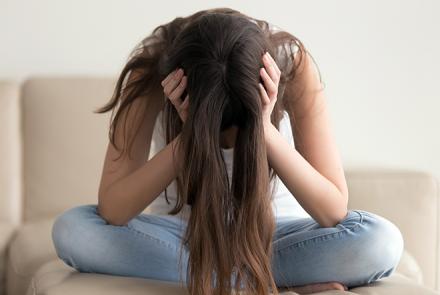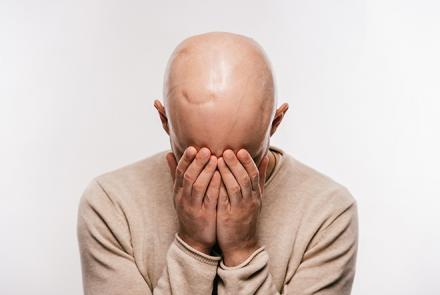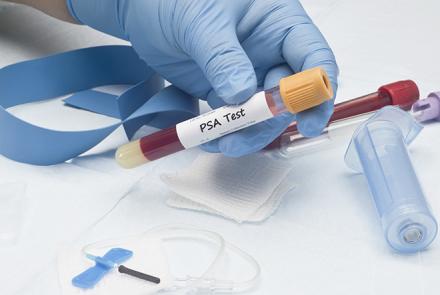
Dr Rajam Iyer, pulmonologist and palliative care physician, gives us an overview of Nicotine Replacement Therapy, a treatment to help people quit smoking, and strongly recommends its promotion among smokers and the need to test it for smokeless tobacco (bidi) users.
What is Nicotine Replacement Therapy?
Nicotine replacement therapy is a treatment that smokers can benefit from. As smokers are addicted to the nicotine in cigarettes, that causes physical dependence, NRT helps in controlling the withdrawal symptoms when smokers attempt to quit. Nicotine replacement therapy (NRT) gives you nicotine – in the form of gum, patches, sprays, inhalers, or lozenges but not the other harmful chemicals in tobacco. NRT can help relieve some of the physical withdrawal symptoms so that the smoker can focus on the psychological (emotional) aspects of quitting. Many studies have shown using NRT can nearly double the chances of quitting smoking.
How does Nicotine Replacement Therapy work?
People can quit tobacco without using NRT, but most of those who attempt quitting do not succeed on the first try. In fact, smokers usually need many tries sometimes as many as 10 or more before they’re able to quit for good. Most people who try to quit on their own go back to smoking within the first month of quitting often because of the withdrawal symptoms.
Nicotine replacement therapy can help with the difficult withdrawal symptoms and cravings that most people say is their only reason for not giving up tobacco. Using NRT reduces those symptoms. While the person continues to get some nicotine in their system, they won’t be exposed to any of the other harmful chemicals that are found in tobacco. The replacement therapy can be started as soon as the person decides to quit smoking.
Don't miss - People who quit smoking
I had to quit overnight to save myself
She quit smoking after many attempts
The smoke rings are not worth this
From 100 cigarettes to smoke free
What are the different types of NRT?
Replacement therapies are available as gum, patches, sprays, inhalers, or lozenges.
- Nicotine gums, lozenges, and inhalers are substitutes you can put into your mouth that let you control your dosage to help keep cravings under better control.
- Nicotine gums and lozenges are generally sugar-free, but if you are diabetic and have any doubts, check with the manufacturer.
- Nicotine nasal spray works very quickly when you need it.
- Nicotine inhalers allow you to mimic the use of cigarettes by puffing and holding the inhaler. It also works very quickly.
- Nicotine patches are convenient and only have to be put on once a day.
- Both inhalers and nasal sprays require a doctor’s prescription.
- Some people may not be able to use patches, inhalers, or nasal sprays because of allergies or other conditions.
- Nicotine gum may stick to dentures or dental work making it hard to chew before “parking.”
How effective is NRT? What are the chances of quitting with NRT?
NRT only deals with the physical dependence. It’s not meant to be the only thing to help quit smoking. Smokers need other methods that help with the psychological (emotional and mental) part of tobacco, such as a quit program. Using these support systems during treatment with NRT for at least a few months after quitting has benefits. Studies have shown that this approach pairing NRT with a program that helps to change behaviour can improve your chances of quitting and staying quit compared to approaches that use only one method. Studies collated show that NRT helps 20% quit smoking permanently.
What are the common side effects of NRT?
When looking at NRT use, the benefits of quitting tobacco must outweigh the potential health risks of NRT for each person. It’s best if recommended by a physician. Safe in all adults, except pregnant women and teenagers. Should not be used by those continuing to smoke.
Side effects include:
- skin irritation when using patches.
- irritation of nose, throat or eyes when using a nasal spray.
- difficulty sleeping (insomnia), sometimes with vivid dreams.
- an upset stomach.
- dizziness.
- headaches.
Although it’s rare, nicotine overdose is a possible risk. Symptoms like a fast heartbeat, nausea and vomiting, dizziness, weakness, or a cold sweat, get medical attention immediately.
How does NRT benefit a smoker? Who is NRT most beneficial for?
Nicotine, a powerfully addictive stimulant, is the primary compound responsible for tobacco's psychoactive effects. Smokers are addicted to cigarettes due to nicotine. Nicotine causes dependence and when they stop cigarettes, smokers experience withdrawal symptoms due to fall in nicotine levels. Nicotine replacement therapy targets this withdrawal symptom. It helps the physical symptoms of withdrawal only. Smokers experience less of the withdrawal symptoms on the replacement therapy and hence the probability of them to completely quit the habit is high. The replacement therapy needs to be complimented by counselling and constant motivation to the smoker. Smokers, who smoke less than 10 cigarettes a day, may not benefit as researchers don’t know whether nicotine replacement will help since it’s designed for people who use tobacco products heavily.
Signs of severe dependence are:
- Smoking more than 1 pack a day.
- Smoking within 5 minutes of waking up.
- Smoking even while sick.
- Waking up at night to smoke.
- Smoking to ease symptoms of withdrawal.
How does NRT compare with other non-traditional quit methods like acupressure, hypnotherapy or herbal cigarettes?
The principles of acupressure state pressure applied to acupoints around the body promote the flow of energy and restore an imbalance. Acupressure is not a substitute for medical care but a routine designed to engage the body’s natural healing abilities. The Stanford School of Medicine website hosts an article that recommends five prime acupoints to reduce cravings for nicotine and aid in a plan to quit smoking. Acupressure may work as a tool to quit smoking but should not be the only method employed. A physician must be consulted for help in designing a broad plan to stop smoking and improve your overall health.
Herbal supplements may act as viable, natural substitute. Consider adding natural sources of caffeine to your diet as nicotine substitutes. Some good sources of caffeine include coffee, tea and dark chocolate. Pacific herb kava-kava as both a recreational drug and a treatment for psychiatric disturbances. Like nicotine, kava-kava creates a temporary sense of well-being. The NIH reports that kava, which works in a manner similar to prescription benzodiazepines such as Xanax and Valium, may help to curb symptoms of anxiety, stress and agitation. Although no studies have investigated its efficacy as a nicotine substitute, it may theoretically ease "nicotine fits," or episodes of anxiety related to nicotine withdrawal.
Natural supplements made from passionflower may help to reduce these frustrating problems. The University of Maryland Medical Center reports that passionflower may help to ease anxiety and insomnia, particularly in people with diagnosed psychiatric problems. However, these uses are primarily based in tradition, with only limited scientific evidence.
What is the difference between e-cigarettes and NRT?
An electronic cigarette or e-cigarette is a handheld electronic device that simulates the feeling of tobacco smoking. It works by heating a liquid to generate an aerosol, commonly called a "vapor", that the user inhales. Using e-cigarettes is commonly referred to as vaping. The liquid in the e-cigarette, called e-liquid, or e-juice, is usually made of nicotine, propylene glycol, glycerine, and flavorings. Not all e-liquids contain nicotine. They are likely safer than tobacco cigarettes, but are of unclear effect in relation to other methods of stopping smoking. Nicotine replacement therapies have more evidence in successfully helping smokers to quit smoking.
Since nicotine replacement products are available over the counter people use it without any medical supervision? Is self-prescription harmful?
Self-prescriptions are dangerous. It must be done under a supervision of a healthcare professional. The dose of NRT varies with the quantity of cigarette smoked. The exact dose can be decided by the physician. Also NRT alone may not be useful. Patients require, counselling, constant encouragement and hand holding to quit the habit for good. Most nicotine replacement therapy products are recommended on the basis of how much you smoke.
These are general guidelines:
- Light smoker: Smokes fewer than 10 cigarettes per day
- Heavy smoker: Smokes a pack a day or more
- An average smoker falls in between.
What is the recommended duration of use for NRT?
12 weeks in moderate smokers, some physicians treat heavy smokers for longer. The FDA has approved use for 3-5 months.
What are the special considerations for adolescents? Are NRT effective?
It is not advisable in teenage population.
More than 1 million die each year due to tobacco in India. Do you advise that NRT be promoted more actively among smokers to bring down this figure?
India has a unique problem where tobacco is not just consumed in the form of cigarettes. 70% of Indians, smoke “bidis”, which contain crude tobacco (0.15–0.25g) loosely packed in hand-rolled dried leaves of tendu (Diisopyros melanoxylon). The smoke from bidis contains 5 times more tar than the smoke from cigarettes, making bidi smoking a far greater risk. Also a large number of men and women chew tobacco in India and we have a huge percentage of oral cancers in the world.
NRT should be promoted amongst smokers and more research needs to be done for its use in smokeless tobacco. Awareness of harmful effects of tobacco, universal health care for early detection of cancer and tobacco related health issues, prevention of easy access to products with tobacco, making cost of purchasing tobacco prohibitory and enforcing rules preventing adolescents and young children purchasing these products need to be regulated, as prevention is always better than cure.
As I practice as a palliative care physician, besides being a pulmonologist, I cannot underestimate the importance of preventing these diseases and educating people to stay away from avoidable causes of cancer.

(Dr Rajam Iyer is a pulmonologist and palliative care physician with Bhatia and Hinduja Hospitals.)
















